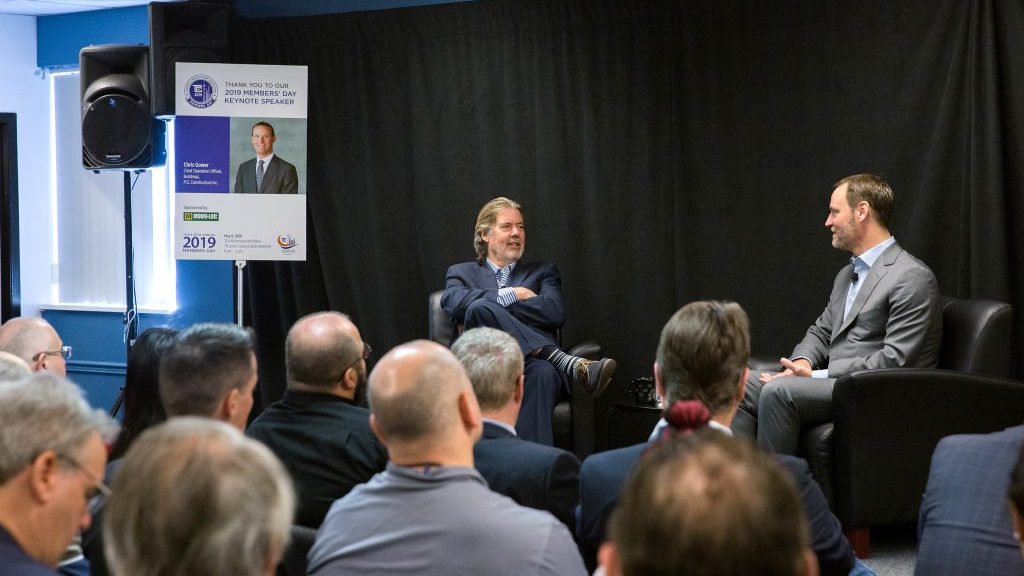The three ways to keep up with the rapidly changing pace of the construction industry are incorporating modular construction, collaborative procurement approaches and technology use, says Chris Gower, chief operating officer, buildings, at PCL Construction.
“Thriving in a changing world is to move towards premanufacturing to the degree that makes sense for your company,” said Gower during his talk at the Toronto Construction Association’s annual Members Day’ held recently at the association’s Richmond Hill office.
“Most of our companies have an increase in the population of millennials and some of the older folks in the room don’t have to necessarily have to find solutions, they just need to get out of the way and let the younger millennials play with some of this technology to find solutions that are going to add value to our customers.”
Gower said all companies, no matter what the size, can incorporate all three elements into projects in different ways.
“Every one of those three initiatives, everyone can participate in their own way, they just have to empower their people,” said Gower.
The challenge with innovating is the procurement process is fractured and it’s not set up to allow for different methods to be adopted, he said.
“That’s one part of the business that is changing and will continue to change and everyone can participate in the modular part of the business,” he noted, adding prefabrication allows for improved quality and safety.
“Architects and engineers aren’t designing elements to be premanufactured because they are not engineered and designed in a way that allow them to be incorporated. Contractors are having to find solutions after the fact which isn’t ideal. How work is procured with the subcontracting community is also a challenge (with prefabrication). The owner needs to select material and finishes and those decisions have to be made up to a year earlier than the normal cycle. Procurement is getting in the way of many things that can be adopted in our industry.”
In terms of procurement methods, he spoke about the evolution from lump sum to design-build, to variations of construction management to integrated project delivery (IPD).
“I think the procurement models are moving in a direction of higher collaboration, lean principles are being adopted and I think that’s going to continue and as it continues it will open the door for greater adoption of prefab or modular solutions,” said Gower. “Technology will be adopted more freely when the consortium or team thinks about simply the value that is created and not by whom but by the collective. That will lead to better solutions.”
He suggested the industry is moving towards a more collaborative procurement model that is “IPD-like” but not exactly IPD because it does not transfer risk well to owners.
“We will get to a place where procurement will be more about how do we collaborate, use the IPD thinking, give owners and end users more control of their destiny and give price certainty and still have the risk profile in what we see today,” said Gower. “Procurement is absolutely changing for the better and innovative approaches both with technology and premanufacturing will force procurement to change to allow new thinking to be adopted.”
Another challenge of procurement, Gower explained, is owners are not rewarded for incorporating innovative methods.
“The industry’s inability or lack of desire to invest in technology is partly driven by (the fact that) we’re not rewarded for it…owners are looking for low cost,” said Gower. “If procurement changes and owners start to put more value on items that generate value to them, then people would want to invest so that they can be more effective and productive at their job.”
Companies should also be testing out new technologies to keep up with the changes. Sensor technology, digital twins and artificial intelligence are a few examples of the technology being used in smart construction, Gower noted.











Recent Comments